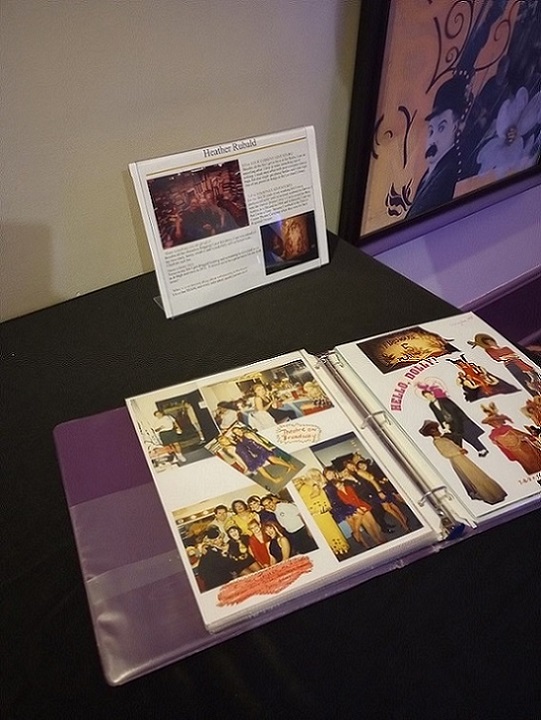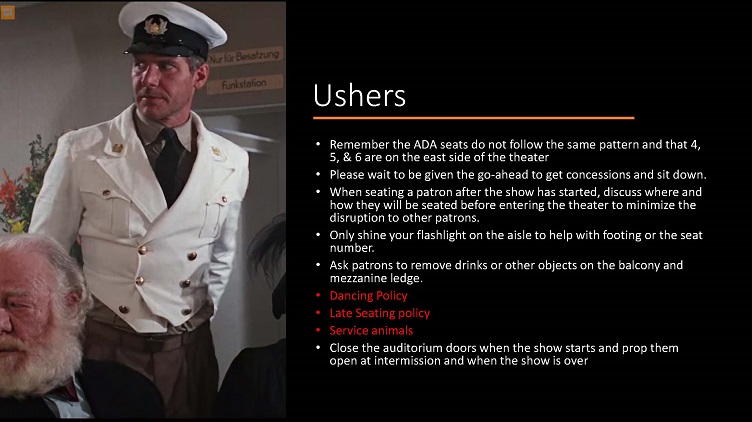Yesterday I talked about some brainstorming that occurred during a post-museum show opening get together. That party was a lot more constructive for me than I expected because it provided fodder for this post as well.
I happened to fall into the orbit of the museum artistic director as she talked about the five types of people who visit museums. I didn’t know until later that these types are all laid out in the book, Identity and the Museum Visitor Experience.
I haven’t read it yet, but the artistic director had done a fair bit of reading and writing on the subject and what you need to consider when laying out a museum exhibit.
The general traits of these types manifest in all arts audiences so I saw a lot of applicability across disciplines.
Experience Seeker– As she described it, the experience seeker is the type of person who goes into the Louvre, takes a picture of the Mona Lisa, walks out again and tells all their friends they have been to the Louvre. While we in the arts hate this person for not taking the time to look at anything else, this person can be very enthusiastic when it comes to discussing their experience with their friends which can drive more visitors.
With this in mind, the artistic director said she uses lighting and really visible signage to highlight one or two select pieces in a gallery. If the experience seeker is only going to orient on one thing, she wants to influence what they look at and what information they absorb because they tend to do a pretty good job of retaining the details and relating them to friends.
Performing Arts entities can do the same thing by highlighting some memorable aspect of the experience. For some places it is going to be the performance, but for others it might be some other element related to the experience or the facility itself. People are likely to remember the skulls and swastikas in Albuquerque’s KiMo Theater, the washrooms at the John Michael Kohler Arts Center, or watching Shakespeare under the stars in a replica of the Globe Theater at one of the Shakespeare festivals around the country, even if they forget or were bored by the details of the performance itself.
Facilitator – This is a person who is trying to help others experience the museum. It could be friends, parents, teachers, etc. Signage is important for these people, but so the ability to procure educational and other support materials that make the experience enjoyable and the works accessible. Physical layout can be important so that the group can easily transition through an exhibit.
For those arts organizations that don’t offer free admission, pricing can be a factor.
Explorer – This person is probably an arts org’s ideal attendee. They pay close attention and have a methodical approach to the experience. In a museum, they seek out the informational plaques and take some time to consider everything they encounter. Even if the give one piece a cursory glance, they don’t assume the next piece won’t be worthy of their attention.
In performing arts situations, these are the people who make sure they arrive on time and are moving toward the doors when the warning lights blink. In any situation, they crave information so they will check out the links on your website, read your program/brochure and take it home with them and tend to be interested in educational programs like workshops, lectures, artist talks, etc.
Unlike the experience seeker, they are good candidates to become donors.
Professionals – this group includes dedicated amateurs/hobbyists as well as colleagues from peer organizations. They are looking for an experience and information that deepens their knowledge about the subject matter. They want to know why an artist was significant to the time they were practicing and what distinctive elements were common to artists from that period.
This is, unfortunately, the audience many press releases and marketing materials are geared to when they include obscure arcana and accolades that only have relevance to this handful of insiders and initiates. If it doesn’t pass the Gal in Starbucks test, save those materials and hand them to these folks.
Even though they are most deeply interested and invested in the content you offer, they only have a low likelihood of becoming a donor. However, they do provide good word of mouth and validation among peer organizations and the general industry.
Recharger- This is the person who uses interactions with your organization to recharge themselves. In a museum, they may come in and sit in front of the same painting every day for a week. They may be a volunteer who helps out because working in a creative environment helps them get through their 9-5 job. Understanding how to interact with these people can be a little tricky. A person who is recharged by sitting in the presence of a work of art may want to control their experience whereas a volunteer may want you to guide their engagement a little.
Not charging them admission on their third visit that week or suggesting they may be interested in looking at project you are working on in “Employees Only” area may make you a friend for life.
According to my friend the museum director, rechargers often fly under the radar and remain quietly involved but can have a deep emotional investment with the organization that manifests in things like surprise bequests in people’s wills.
Everyone ends up embodying one of these types at different points in their lives. In a museum you may be an explorer but in a performance venue you engage as a professional. When you bring your nieces and nephews to a show, you operate as a facilitator and realize just how inhospitable some of your policies and practices are to families. At Mt. Rushmore you are an experience seeker and annoy everyone with your attempt to take a selfie that makes it appear you are punching Teddy Roosevelt in the nose.
No space or program can perfectly serve each of these types, but being aware of them allows you to anticipate the different ways you can address the needs of each.








Santa Cruz Shakespeare has several tiers of benefits for donors/members. Some, like season-announcement parties, are open to several tiers. Some,…